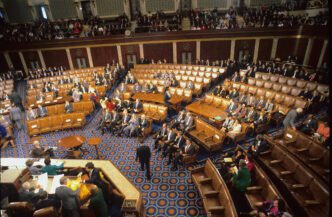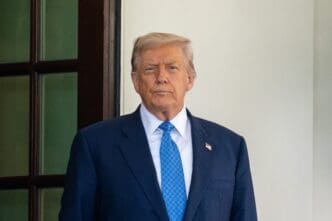Executive Summary
The Story So Far
Why This Matters
Who Thinks What?
President Donald Trump has signed an executive order directing the Justice Department to investigate incidents of flag burning, asserting that such acts are an important issue and can incite violence. This action by Trump challenges established legal precedent, as the Supreme Court has consistently affirmed flag burning as a form of protected speech under the First Amendment.
The executive order aims to prosecute flag burning incidents where other laws are broken, such as violent crimes, hate crimes, or crimes against property and the peace. Trump stated that the simple act of burning the flag is an incitement, leading to unrest.
Supreme Court Precedent on Flag Burning
The Supreme Court, in its landmark 1989 decision in Texas v. Johnson, declared flag burning to be a protected form of speech. This ruling stemmed from the case of Gregory Lee Johnson, a member of the Revolutionary Communist Youth Brigade, who burned an American flag outside the 1984 Republican National Convention in Dallas, violating a Texas state law.
Justice William Brennan, writing for the majority, stated that the government cannot assume every provocative idea will incite a riot and must examine the actual circumstances. The Court held that flag burning, on its own, does not constitute “fighting words.” This decision created a new right of expression for most Americans, overturning state laws that outlawed the act.
Ideological Divide and Congressional Response
The 1989 decision cut across ideological lines, with Justice Anthony Kennedy, a conservative, concurring, stating, “The hard fact is that sometimes we must make decisions we do not like.” Dissenting justices expressed strong disapproval. In response, Congress passed a new law attempting to outlaw flag burning, but the Supreme Court quickly reaffirmed its protection of flag burning as speech in a 1990 case.
Antonin Scalia’s Perspective
Years later, in 2012, Justice Antonin Scalia, a prominent conservative, articulated his nuanced view on flag burning during an interview. He stated that while personally he would not allow flag burning if he “were king,” the First Amendment explicitly protects free speech, particularly speech critical of the government.
Scalia emphasized that speech is not limited to written or oral words and can include symbolic acts like flag burning, which expresses ideas such as “I hate the government” or “the government is unjust.” He clarified that flag burning is not a form of insurrection.
Public Opinion and Current Political Landscape
Despite the Supreme Court’s protection, public opinion largely opposes flag burning. A YouGov/CBS poll published in July indicated that two-thirds of Americans believe flag burning should be against the law.
Historically, efforts to ban flag burning have faced challenges. In 2006, a proposed constitutional amendment to ban flag burning failed in the Senate by one vote, with then-Republican leader Sen. Mitch McConnell casting the deciding vote against it. Currently, however, Senate Republicans are led by Sen. John Thune, who advocates for a constitutional amendment to outlaw flag burning. President Trump has also long opposed flag burning, previously suggesting that those who burn the flag should forfeit their citizenship.
It remains uncertain how the current Supreme Court might view flag burning if the issue were to come before them again as a result of Trump’s executive order. At least one current justice, Samuel Alito, has had his household involved in a flag-related political gesture, though he attributed his wife’s act of flying an upside-down flag to a dispute with a neighbor.
President Trump’s executive order on flag burning reignites a long-standing debate between constitutional protections for free speech and public sentiment regarding the flag’s symbolism. While the Supreme Court has consistently upheld flag burning as protected expression, the administration’s new directive may prompt further legal scrutiny and potentially challenge established precedent.








